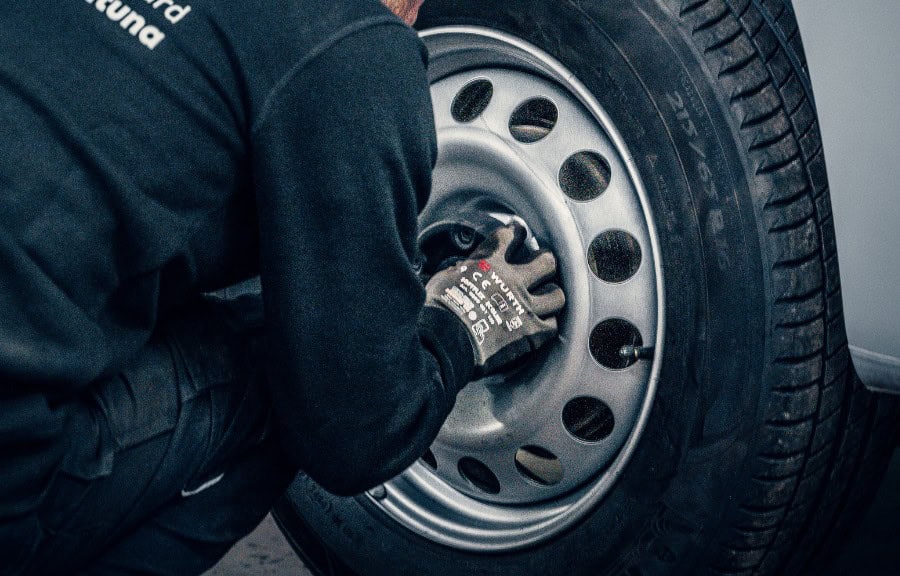When the temperature drops and frost begins to bite in the morning air, it’s time to think about the most important winter safety measure – switching to winter tires. But safe winter driving isn’t just about the right tires; it’s also about making sure your car is in good condition to handle snow, ice, and sub-zero temperatures. Here’s a checklist for both changing your tires and ongoing winter maintenance.
Before Changing Tires – What You Should Consider
- Check the tread depth The legal requirement for winter tires is at least 3 mm, but for optimal grip, 5 mm or more is recommended. Do the tires have cracks, uneven wear, or are they older than 10 years? Then it’s time to invest in new ones.
- Choose the right type of winter tire Studded tires provide better grip on icy roads, while friction tires are quieter and perform better on snow. Be aware of local regulations regarding studded tires in certain city centers.
- Balance and check tire pressure Incorrect tire pressure negatively affects road grip and increases fuel consumption. Cold air reduces pressure – always check when the tires are cold.
Winter Maintenance – Tips That Save Both Money and Trouble
- Check the battery Cold is the battery’s worst enemy. A weak battery may cause starting problems on cold mornings. Check the battery’s charge and replace it if it’s old or shows weak capacity.
- Inspect the coolant The coolant must have the right mix to prevent freezing. Check the freezing point and replace or top up with the correct coolant if needed.
- Wiper blades and washer fluid Replace worn wiper blades and make sure you use washer fluid that can handle low temperatures. Poor visibility in winter traffic can be dangerous.
- Protect the car body Winter roads mean salt and dirt that can lead to rust. A thorough wash and application of wax or paint protection before winter reduces the risk of damage and makes cleaning easier during the season.
- Lighting and lamps When darkness is at its peak, functioning lights are crucial for safety. Check that all lights work and adjust the headlights if necessary to ensure proper illumination.
- Pack winter equipment Always carry a snow shovel, ice scraper, reflective vest, and preferably jumper cables or an emergency kit in the car. Being prepared can make a big difference if you end up in a tricky situation on winter roads.
By following these simple tips and preparing your car properly, you’ll drive safely and confidently through the winter.
